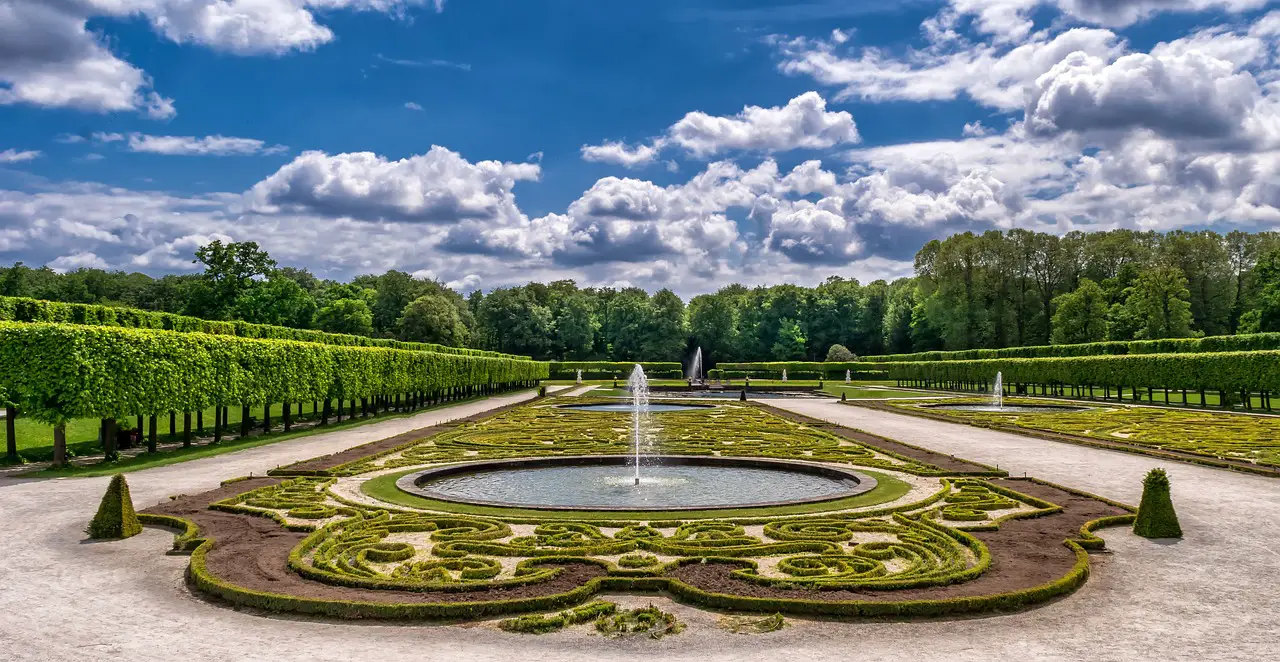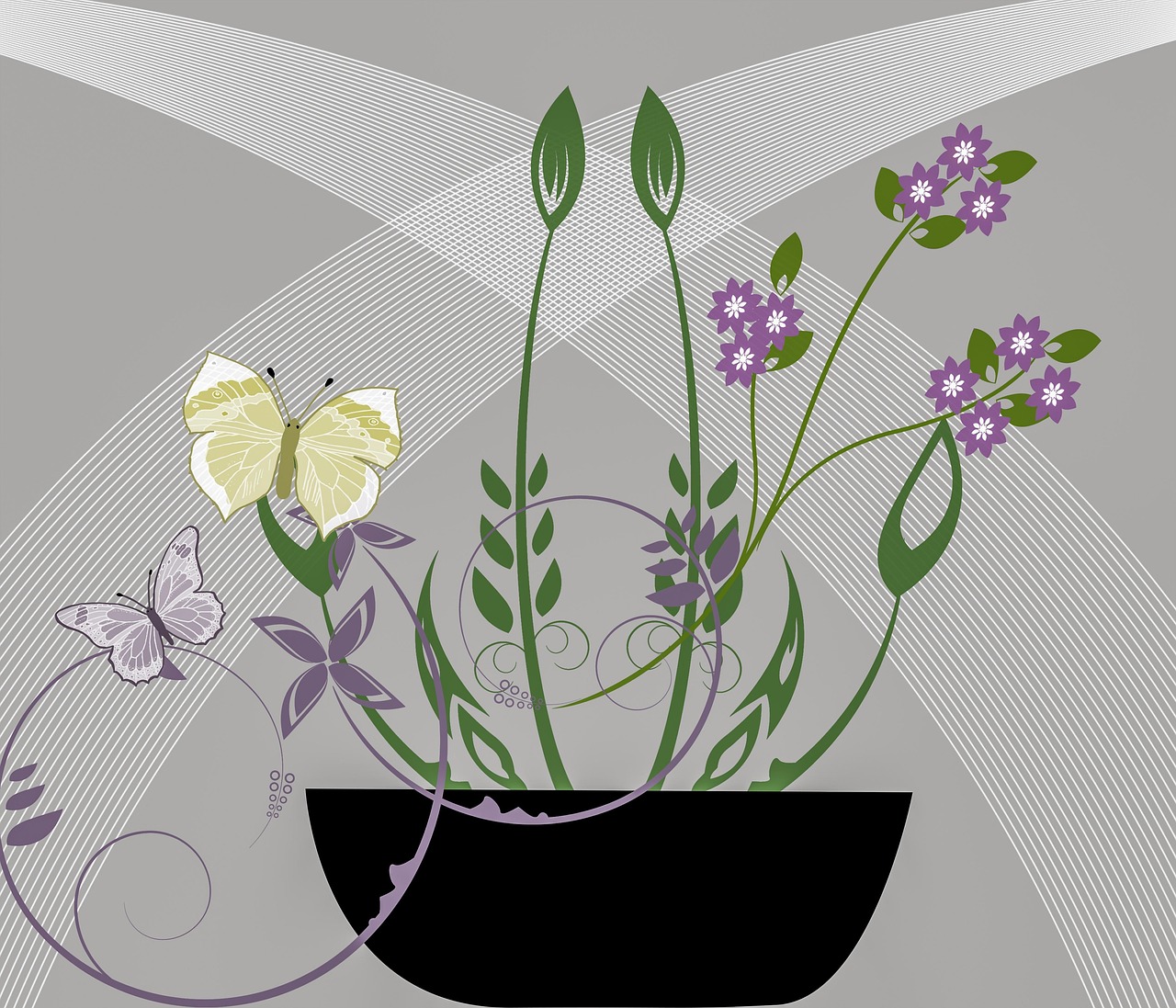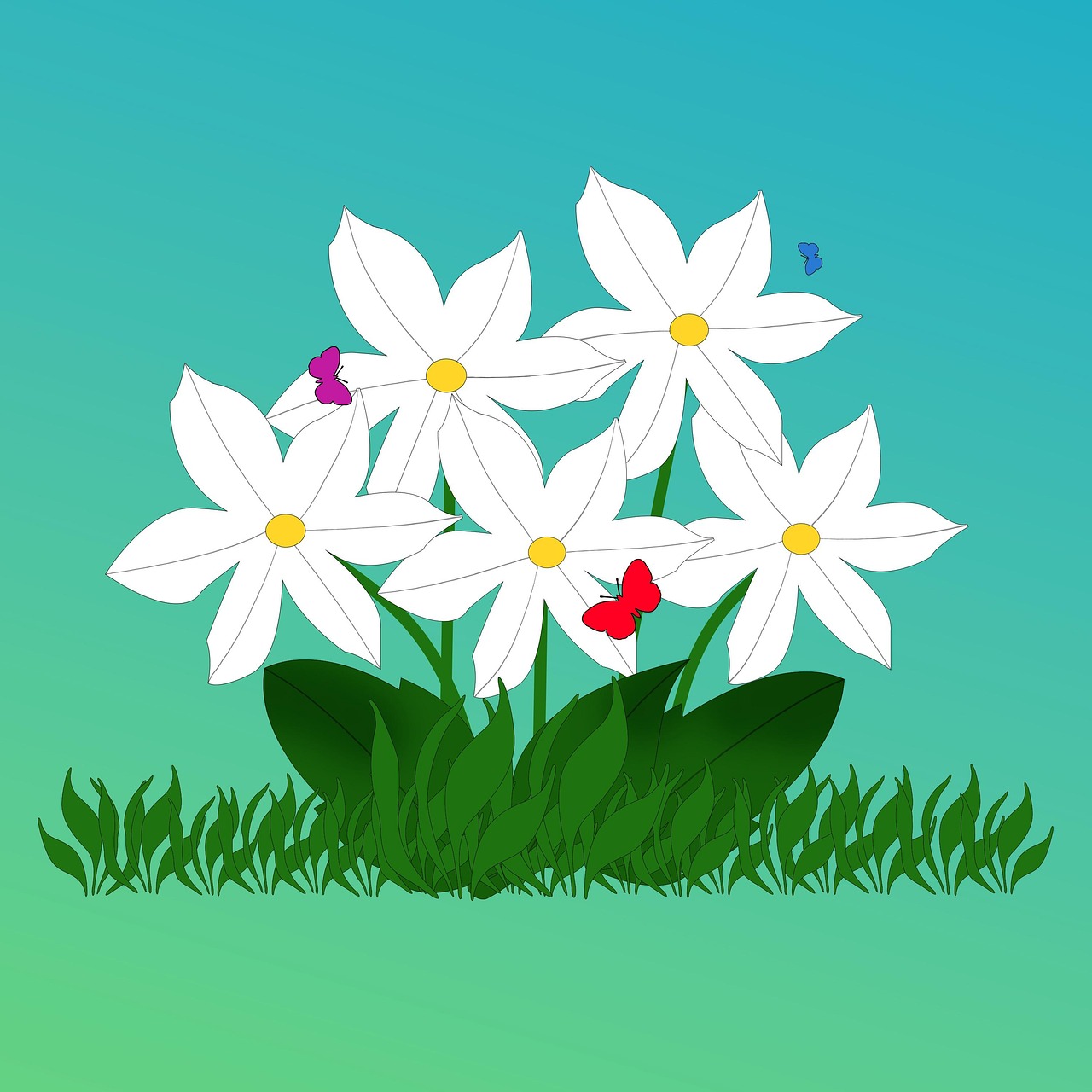The Rule of Three is a fundamental principle in garden design that enhances visual balance and harmony. By grouping plants, features, or colors in sets of three, designers create a more engaging and appealing landscape. This technique simplifies choices and improves the overall aesthetic of a garden.
Understanding the Rule of Three
The Rule of Three is a design concept used in various fields, including art, photography, and architecture. In garden design, it helps to create a pleasing arrangement that draws the eye. Whether you are planting flowers, shrubs, or trees, using this rule can significantly impact the look and feel of your outdoor space.

When applying the Rule of Three, it is essential to understand that it is not merely about having three elements. Instead, it focuses on the relationship between these elements. This principle encourages diversity while maintaining unity within the design. By selecting three different plants or garden features that complement each other, you can achieve a balanced composition that feels cohesive yet dynamic.
The Benefits of Using the Rule of Three
Implementing the Rule of Three in your garden design comes with several advantages:
- Visual Appeal: Grouping elements in odd numbers, particularly threes, creates a more engaging visual experience.
- Focal Points: This rule helps establish focal points in your garden, guiding visitors’ attention to specific areas.
- Variety and Harmony: Mixing different species while maintaining a unified theme allows for diversity without chaos.
- Ease of Design: For novice gardeners, the Rule of Three simplifies decision-making when selecting plants and arranging features.
Applying the Rule of Three
To effectively utilize the Rule of Three in your garden design, consider the following tips:

- Choose Complementary Plants: Select three plants that have varying heights, colors, and textures. For example, pair a tall plant with two shorter varieties that bloom at different times to extend interest throughout the season.
- Create Layers: Use the rule to create layers in your garden. Place taller plants in the back, medium-height plants in the middle, and shorter ones in the front. This arrangement enhances visibility and depth.
- Incorporate Hardscaping: The Rule of Three can also apply to hardscaping elements like benches, trellises, or pots. For instance, placing three pots of varying sizes can create a striking visual effect.
- Mix Textures and Colors: Combine different foliage textures and colors to maintain interest. Ensure that the colors complement each other rather than clash.
Examples of the Rule of Three in Garden Design
Here are some examples illustrating how to implement this rule effectively:
| Plant Type | Description | Combination Example |
|---|---|---|
| Tall Perennials | Add height and drama to your garden. | Sunflowers with Lavender and Daylilies |
| Mounding Shrubs | Create soft edges and fill gaps. | Boxwood with Hydrangeas and Spireas |
| Ground Covers | Fill spaces while reducing weeds. | Creeping Thyme with Sedum and Ajuga |
By thoughtfully applying the Rule of Three, gardeners can create spaces that are not only beautiful but also functional. This approach allows for creativity while ensuring that the overall design remains cohesive. As you plan your garden layout, keep these guidelines in mind for optimal results.
Choosing Plants for the Rule of Three
Choosing the right plants is crucial when applying the Rule of Three in garden design. The selection process involves considering various factors, such as plant height, color, and texture. By creating a thoughtful combination, you can enhance visual interest and cohesion in your garden.

Consider Height Variations
Creating layers within your garden adds dimension. When selecting plants, aim for a mix of heights:
- Tall Plants: Use taller plants as focal points. These can be positioned at the back of borders or in the center of circular designs.
- Medium Plants: Choose medium-height plants to fill the middle sections. These help transition between the tall and short plants.
- Short Plants: Finally, select shorter plants to fill the front of the garden bed. They should not obstruct the view of taller species.
Color Schemes
Color plays a vital role in plant selection. Here are some tips to create an eye-catching palette:
- Complementary Colors: Choose colors that complement each other. For example, pairing purples with yellows creates a vibrant contrast.
- Analogous Colors: Use shades that are next to each other on the color wheel for a more harmonious look.
- Seasonal Interest: Consider plants that bloom at different times to maintain color throughout the seasons.
Textural Variety in Plant Selection
The use of different textures can transform your garden design. Mixing smooth, coarse, shiny, and matte surfaces adds depth and visual intrigue. Here are some examples:

| Texture | Plant Examples | Visual Effect |
|---|---|---|
| Smooth | Hostas, Sedums | Creates a clean, elegant appearance. |
| Coarse | Ornamental Grasses, Echinacea | Adds movement and a natural feel. |
| Shiny | Holly, Rhododendrons | Provides a polished look that reflects light. |
| Matte | Ferns, Lamb’s Ear | Offers a soft, understated effect. |
Incorporating Hardscape Elements
In addition to plants, hardscape elements can also benefit from the Rule of Three. Incorporating features like stones, pathways, and seating areas can enhance your garden’s design. Here are some ideas:
- Pathways: Use three distinct materials for pathways, like gravel, pavers, and wood chips. This adds variety and interest while guiding visitors through your garden.
- Sitting Areas: Create seating arrangements with three pieces of furniture, such as chairs or benches. This encourages conversation and relaxation.
- Decorative Stones: Place three different types of stones or boulders throughout your landscape to create focal points without overwhelming the space.
The Role of Seasonal Changes
It is essential to consider seasonal changes when designing your garden with the Rule of Three. Different seasons bring varying colors and textures. Selecting plants that provide visual interest year-round can enhance your overall design. Here are some examples:
- Spring: Choose early bloomers like daffodils, tulips, and hyacinths for vibrant colors.
- Summer: Add mid-summer favorites such as sunflowers, daylilies, and coneflowers for continuous blooms.
- Fall: Incorporate autumn staples like ornamental grasses, asters, and chrysanthemums for rich hues.
- Winter: Include evergreens and winter-blooming plants like hellebores for structure during colder months.
This strategic selection ensures that your garden maintains appeal throughout the year, keeping it engaging and visually balanced according to the Rule of Three.
Designing Garden Layouts with the Rule of Three
Once you have selected plants and hardscape elements, the next step is designing the layout of your garden. The Rule of Three can greatly influence how effectively these elements are arranged to create visual balance. A well-thought-out layout can guide visitors through your garden while providing a harmonious aesthetic.
Creating Focal Points
Focal points are essential in garden design. They draw the eye and provide a sense of direction. Here’s how to establish focal points using the Rule of Three:
- Highlight Key Features: Use three distinct focal points, such as a striking tree, a sculpture, or a water feature. Position them strategically to create a triangular layout that guides the viewer’s gaze.
- Layering Elements: Place taller plants or structures at the focal points. This adds height and drama to your design while ensuring that the focal points stand out.
- Use Repetition: Repeat similar elements around your focal points. For example, if you have a large ornamental tree as a focal point, use smaller trees or shrubs of the same type in groups of three nearby to tie the design together.
Pathways and Flow
Pathways help create movement within your garden, encouraging exploration and engagement. Using the Rule of Three can enhance this flow:
- Pathway Design: Create paths that branch off into three directions at key points. This encourages visitors to explore different areas of your garden.
- Stepping Stones: Use sets of three stepping stones at intervals along the path. This not only aids navigation but also adds visual interest.
- Bench Placement: Position seating areas in groups of three along pathways. This invites rest and contemplation while enhancing the design’s overall balance.
Integrating Seasonal Color and Texture
A successful garden design incorporates seasonal color and texture while adhering to the Rule of Three. This approach ensures your garden remains vibrant throughout the year:
Seasonal Color Schemes
Plan your garden layout to include plants that bloom in groups of three, featuring seasonal colors:
- Spring: Use three types of bulbs that bloom in early spring. For example, daffodils, tulips, and grape hyacinths create a colorful display.
- Summer: Select summer bloomers like three varieties of daisies, phlox, and zinnias to maintain a lively atmosphere.
- Fall: Incorporate fall foliage plants such as three types of maples or oaks for rich autumn colors.
Textural Interest Throughout Seasons
Diversity in texture enhances visual intrigue. Consider these combinations for each season:
| Season | Plant Textures | Examples |
|---|---|---|
| Spring | Smooth, Soft | Pansies, Ferns, Violets |
| Summer | Coarse, Bold | Sunflowers, Bee Balm, Russian Sage |
| Fall | Rugged, Colorful | Asters, Sedums, Ornamental Grasses |
| Winter | Smooth, Sturdy | Pine Trees, Holly, Hellebores |
The Importance of Maintenance in Garden Design
A beautiful garden requires ongoing maintenance. When designing with the Rule of Three, consider ease of upkeep:
- Plant Groupings: Position plants in threes that share similar care requirements. This simplifies watering, pruning, and fertilizing tasks.
- Diversity with Ease: Include a variety of plants that thrive together. For example, mix drought-tolerant perennials with similar needs for reduced water consumption.
- Sustainable Practices: Implement sustainable gardening practices to maintain health and vitality. Using mulch around grouped plants can conserve moisture and suppress weeds.
Incorporating these maintenance strategies not only preserves the beauty of your garden but also aligns with the principles of the Rule of Three. A well-maintained garden will continue to thrive and offer beauty throughout its life cycle.
Final Considerations for Implementing the Rule of Three
As you embark on your garden design journey with the Rule of Three, remember that successful implementation hinges on thoughtful planning and creativity. This principle serves as a guiding framework that not only enhances visual balance but also encourages diversity and unity in your garden.
One essential aspect to keep in mind is the importance of seasonal planning. By understanding how plants change throughout the year, you can select varieties that will provide continuous visual interest. Aim for a mix of evergreen plants, perennials, and annuals to ensure your garden remains vibrant and engaging, regardless of the season.
Embracing Experimentation
While the Rule of Three provides a solid foundation for garden design, do not hesitate to experiment. Here are a few ideas to inspire creativity:
- Try Non-Traditional Groupings: While threes are effective, sometimes grouping plants in pairs or larger clusters can create a unique look. Assess what works best for your space.
- Vary Plant Types: Incorporate a mix of flowering plants, foliage plants, and structural elements like trees or sculptures. This variety can enhance the interest and beauty of your garden.
- Utilize Color Theory: Explore different color schemes beyond the basics. For instance, experiment with monochromatic palettes or contrasting colors to add depth and drama.
Maintaining Balance Over Time
As your garden matures, it will evolve. Plants grow, flourish, and sometimes fade away. Therefore, regular assessment is crucial to maintaining the balance established by the Rule of Three:
- Monitor Growth: Keep an eye on how plants develop over time. Some may outgrow their neighbors, disrupting the intended balance.
- Replace and Rejuvenate: Don’t hesitate to remove or replace plants that no longer fit the design. Consider introducing new varieties based on seasonal changes or personal preferences.
- Adapt to Environmental Changes: Be aware of how weather patterns or climate changes affect your garden. Adaptations may be necessary to sustain plant health and visual appeal.
Conclusion
The Rule of Three in garden design is a powerful tool that can transform an ordinary space into a visually harmonious oasis. By understanding the principles behind this rule, selecting appropriate plants, and considering seasonal variations, you can create a garden that is both beautiful and functional. Remember that creativity and adaptability are key components in successful garden design.
As you cultivate your garden, embrace the process as much as the outcome. Experiment with different combinations while keeping the Rule of Three in mind, and allow your space to reflect your personality and style. With thoughtful planning and ongoing maintenance, your garden will flourish and bring joy throughout the seasons, providing a lasting legacy of beauty for years to come.
Ultimately, the Rule of Three not only simplifies garden design but also encourages a deeper connection with nature. As you observe how plants interact and complement each other, you foster an appreciation for the delicate balance within your own outdoor sanctuary.
